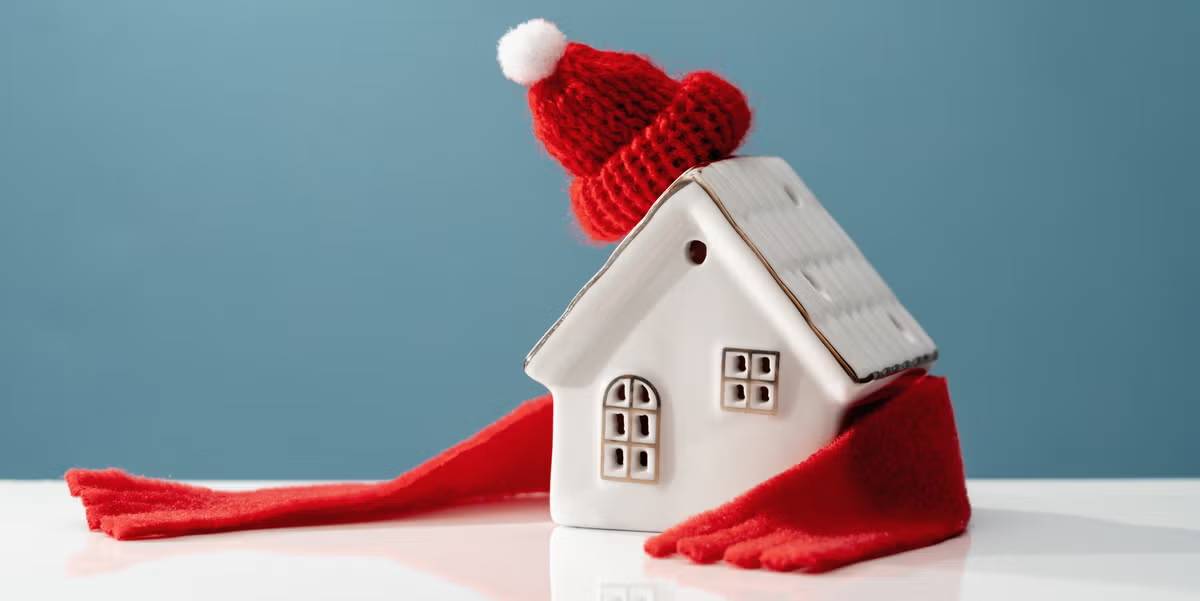Winter can be a tough season for your home, especially when the weather turns cold and harsh. Whether you’re dealing with snowstorms, freezing temperatures, or heavy winds, it’s crucial to prepare your house to keep the cold at bay. The good news is that there are a number of simple and effective steps you can take to ensure that your home stays warm, safe, and comfortable all winter long.
You don’t have to break the bank to get your home ready. With a little time and effort, you can make your home winter-ready and potentially avoid expensive repairs down the road. If money is tight and you’re concerned about how to fund these preparations, a debt relief program could be a good first step to help you manage your finances and focus on the essential home maintenance tasks. Let’s walk through some key steps to get your home prepared for winter, no matter what climate you live in.
1. Insulate Your Home to Keep the Heat In
Proper insulation is one of the most effective ways to keep your home warm in the winter without cranking up the thermostat. A well-insulated home helps trap heat and prevents warm air from escaping, which can lower your heating bills and keep your family comfortable.
Start by checking the insulation in key areas of your home, such as the attic, basement, and walls. If your insulation is old or inadequate, consider adding more or upgrading it. You can also check for air leaks around doors and windows. Sealing gaps and cracks with weatherstripping or caulking can prevent cold air from entering and warm air from escaping.
If replacing insulation or sealing gaps feels like an expensive project, there are simpler alternatives, like adding thermal curtains to windows or using draft stoppers for doors. These options can still help reduce heat loss and make your home feel cozier.
2. Service Your Heating System
Before the first cold snap arrives, it’s important to make sure your heating system is running efficiently. Whether you have a furnace, heat pump, or other heating system, scheduling a professional maintenance check can help you catch any issues before they become major problems. A heating system that isn’t functioning properly can drive up your energy costs and leave your home chilly on the coldest days.
Take the time to replace the air filters in your system, as dirty filters can reduce airflow and strain the unit. Check your thermostat settings to make sure everything is working correctly. If you’re using a space heater or other portable heating devices, inspect them for safety and make sure they’re functioning properly.
If you’re concerned about the costs of servicing your heating system, consider looking into a debt relief program to manage your finances and prioritize these essential home maintenance tasks. A small investment in your heating system now can save you from larger repair bills later.
3. Check Your Roof and Gutters
Your roof is your home’s first line of defense against winter weather, so it’s important to make sure it’s in good condition. Inspect your roof for any missing or damaged shingles, as these can allow water to seep into your home when it rains or snows. If you notice any issues, hire a professional to repair or replace shingles before the weather gets worse.
Don’t forget about your gutters! Clogged gutters can lead to water buildup, which can freeze and cause damage to your roof, walls, and foundation. Clean out leaves, twigs, and other debris from your gutters, and make sure downspouts are directing water away from your home. Installing gutter guards can help prevent debris buildup in the future.
4. Protect Your Pipes from Freezing
Frozen pipes are one of the most common—and costly—winter problems homeowners face. When the temperature drops, water in your pipes can freeze, expand, and cause pipes to burst. To avoid this, make sure to insulate any exposed pipes, especially those in unheated areas like the basement, attic, or garage. You can purchase foam pipe insulation or use heat tape to wrap vulnerable pipes.
If you’re planning to be away during the winter months, set your thermostat to at least 55°F to keep your pipes from freezing. It’s also a good idea to let faucets drip slowly during extreme cold spells to relieve pressure in the pipes.
If you’re on a tight budget and worried about the costs of pipe insulation, consider tackling the most vulnerable pipes first, such as those near exterior walls or in unheated crawl spaces. Sometimes, even a small investment in insulation can save you a lot of money in the long run by preventing costly water damage.
5. Prepare Your Windows and Doors
Your windows and doors are prime spots where heat can escape. To help keep your home warm and reduce heating costs, start by checking for drafts. If you feel a breeze around your windows and doors, use weatherstripping or caulk to seal the gaps. This will help keep the cold air outside and the warm air inside.
In addition to sealing leaks, you can also add window film or use plastic window insulation kits for extra protection. If you’re looking to take your energy-saving efforts a step further, consider upgrading to energy-efficient windows that are designed to keep the cold out.
For doors, ensure that they close tightly and don’t allow drafts to seep in. Installing a draft stopper at the bottom of doors can also help keep warmth inside.
6. Stock Up on Emergency Supplies
Winter weather can be unpredictable, so it’s always a good idea to be prepared for power outages, snowstorms, or other unexpected situations. Stock up on essential supplies like bottled water, canned goods, medications, flashlights, batteries, and blankets. Having these items on hand will ensure that your family stays safe and comfortable if the weather takes a turn for the worse.
If you’re dealing with financial challenges, consider buying items in bulk when possible. This way, you can take advantage of discounts and avoid having to spend extra money in the middle of winter.
7. Inspect Your Driveway and Walkways
If you live in a region where snow and ice are common, it’s essential to take care of your driveway and walkways before winter hits. Clear away any leaves, debris, or cracks in the pavement that could make walking or driving dangerous during the winter months. If there are any significant cracks, consider having them repaired to avoid further damage from freezing water.
Stock up on salt or ice melt to keep your driveway and walkways safe and slip-free. You may also want to invest in a snow shovel or snow blower to make clearing snow easier during winter storms.
8. Ensure Your Fireplaces and Chimneys Are Ready
If you have a fireplace or wood stove, now is the time to make sure it’s ready for the winter months. Have your chimney cleaned to remove any built-up soot or debris that could cause a fire hazard. Make sure the damper works properly to prevent heat from escaping when the fireplace is not in use.
If you burn wood, stock up on firewood early in the season to avoid running out during a snowstorm. You can also check your smoke and carbon monoxide detectors to ensure they’re functioning properly, as these are crucial for safety during winter.
Conclusion: Stay Ahead of Winter’s Challenges
Preparing your home for winter doesn’t have to be a huge, expensive project. By tackling these small tasks now, you can ensure that your home stays warm, safe, and comfortable throughout the colder months. From insulating your home to checking your roof, every small step you take will make a difference. Remember, being proactive about home maintenance can help you avoid costly repairs and keep your home in good shape all year round.
Keep an eye for more latest news & updates on Tribune Breaking!






